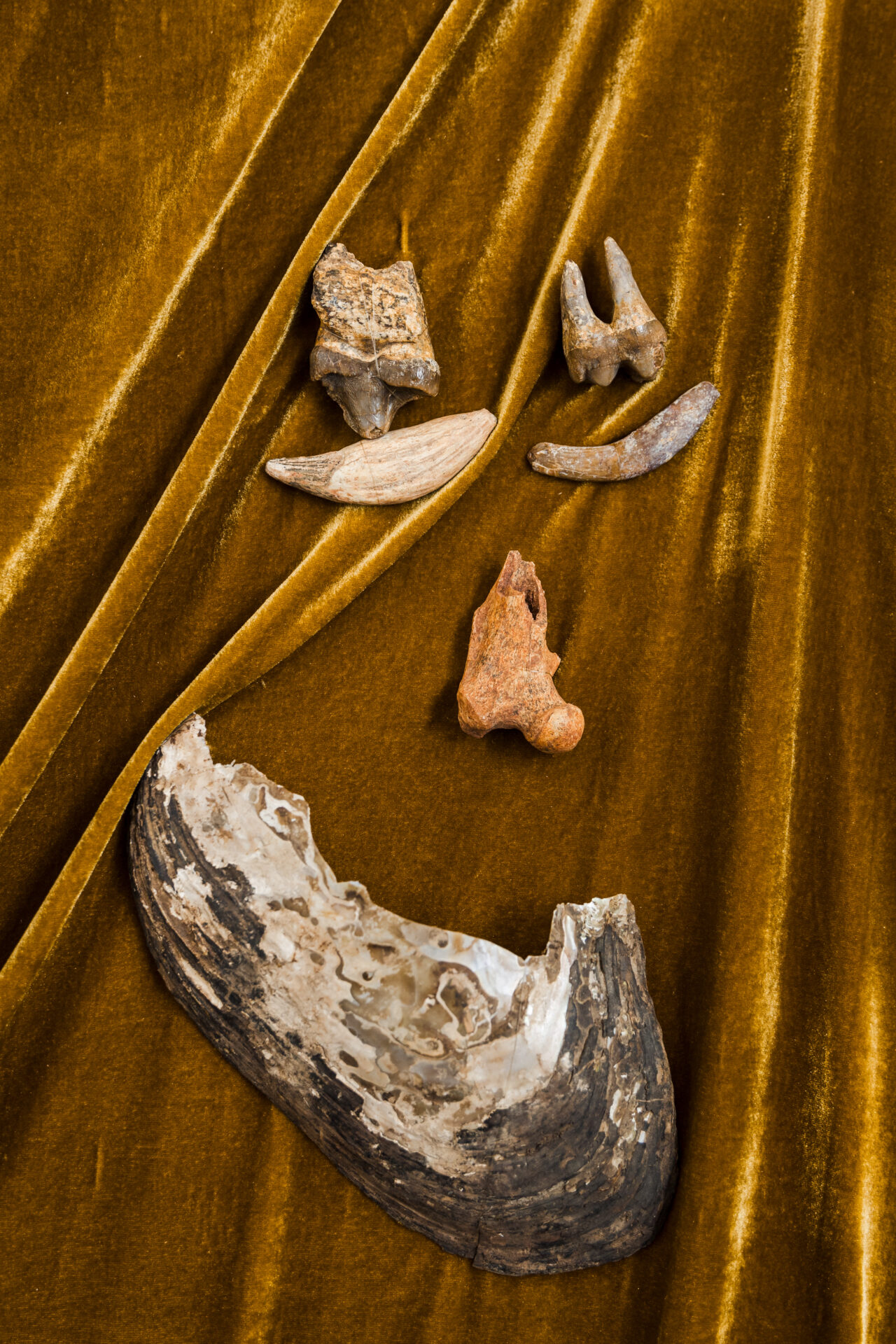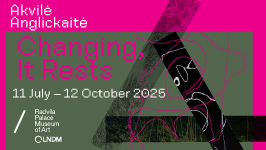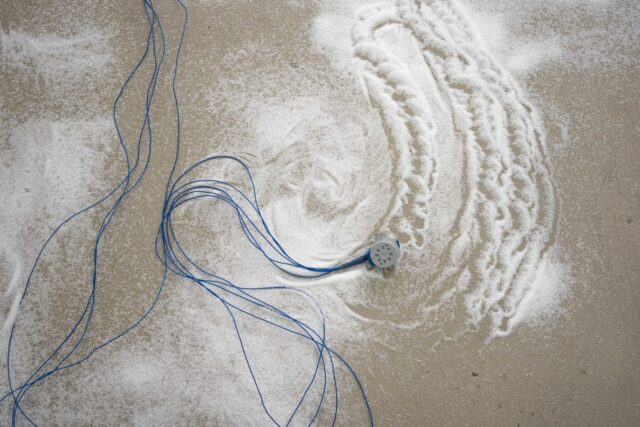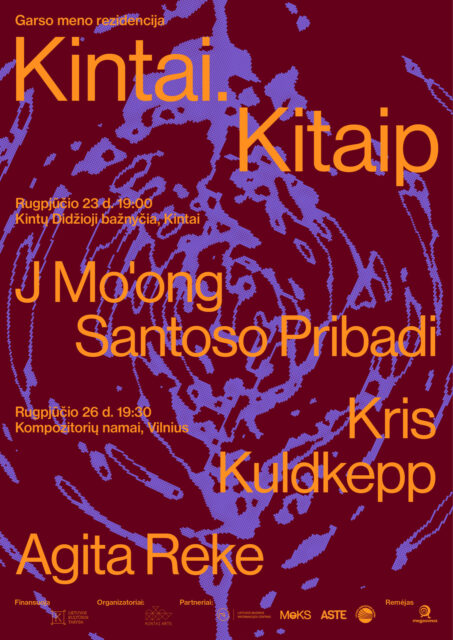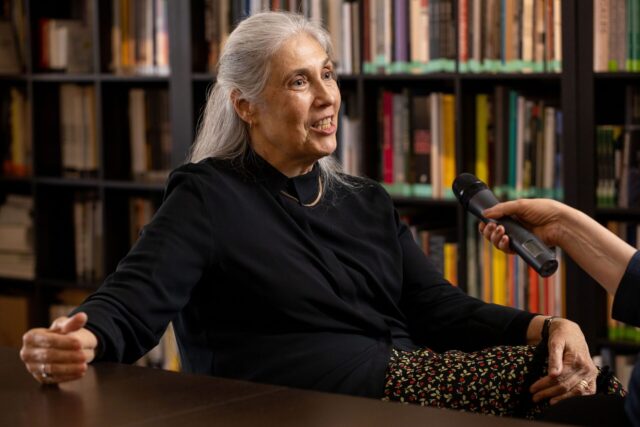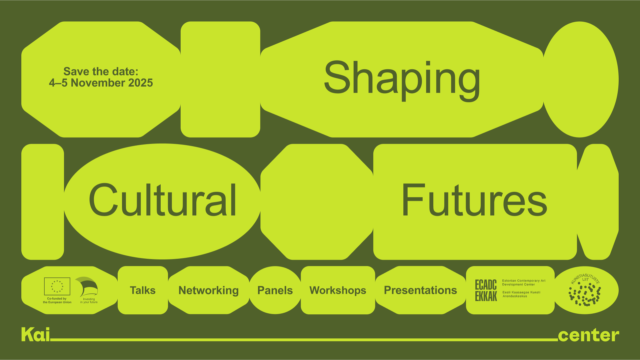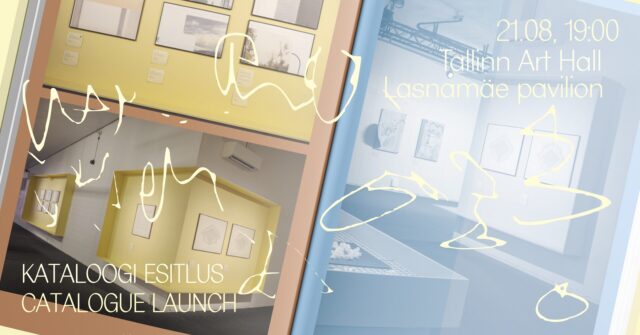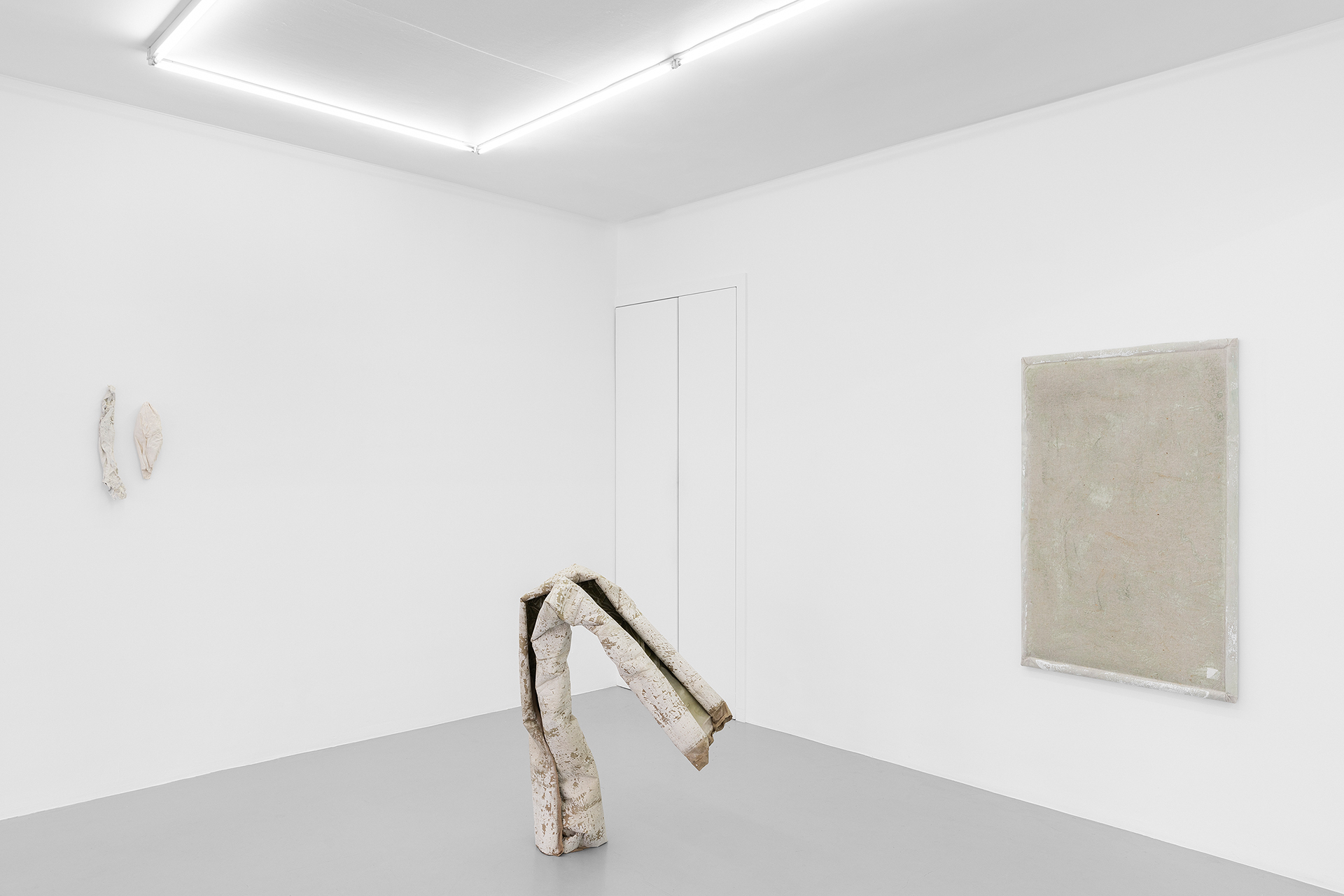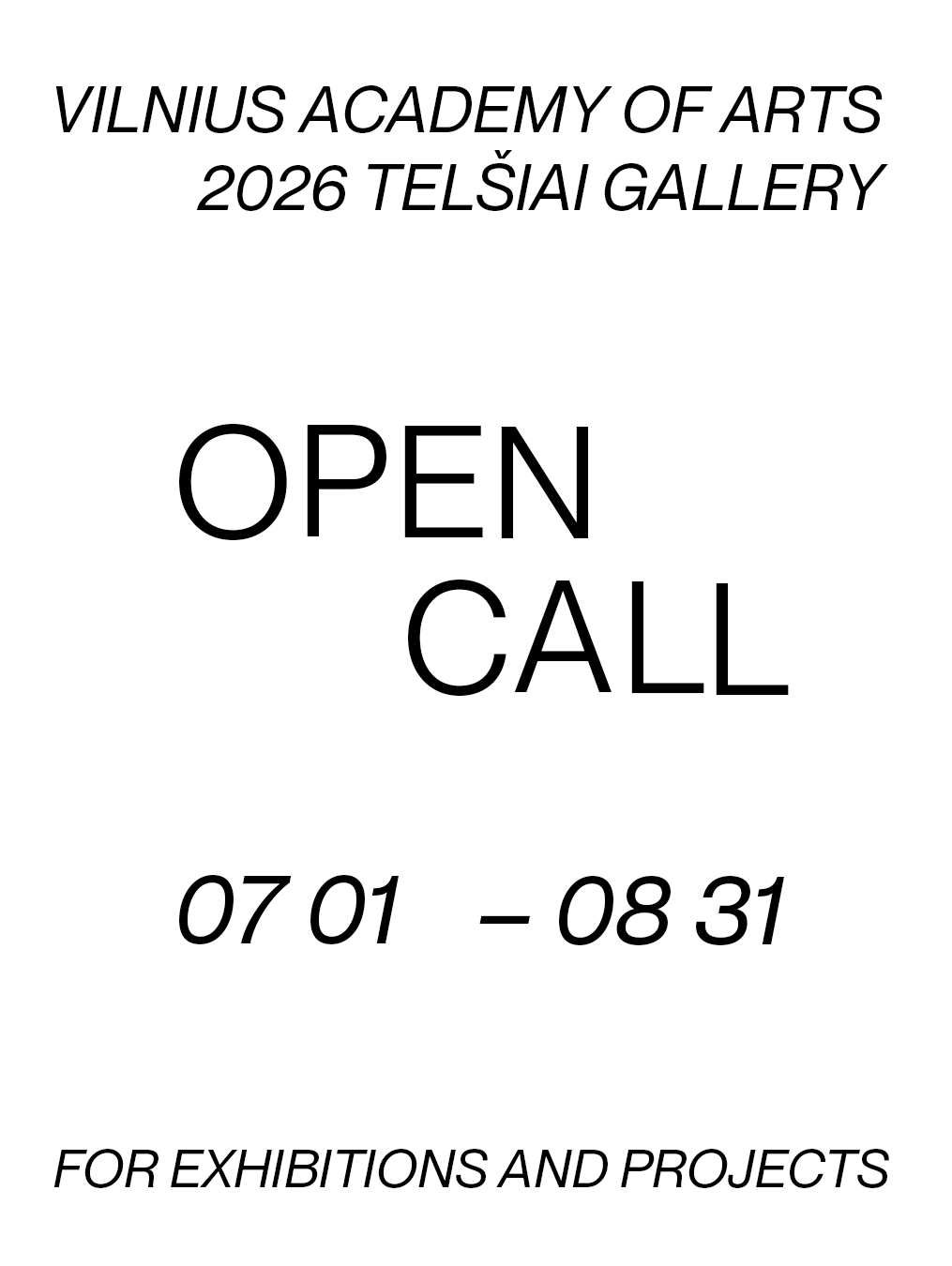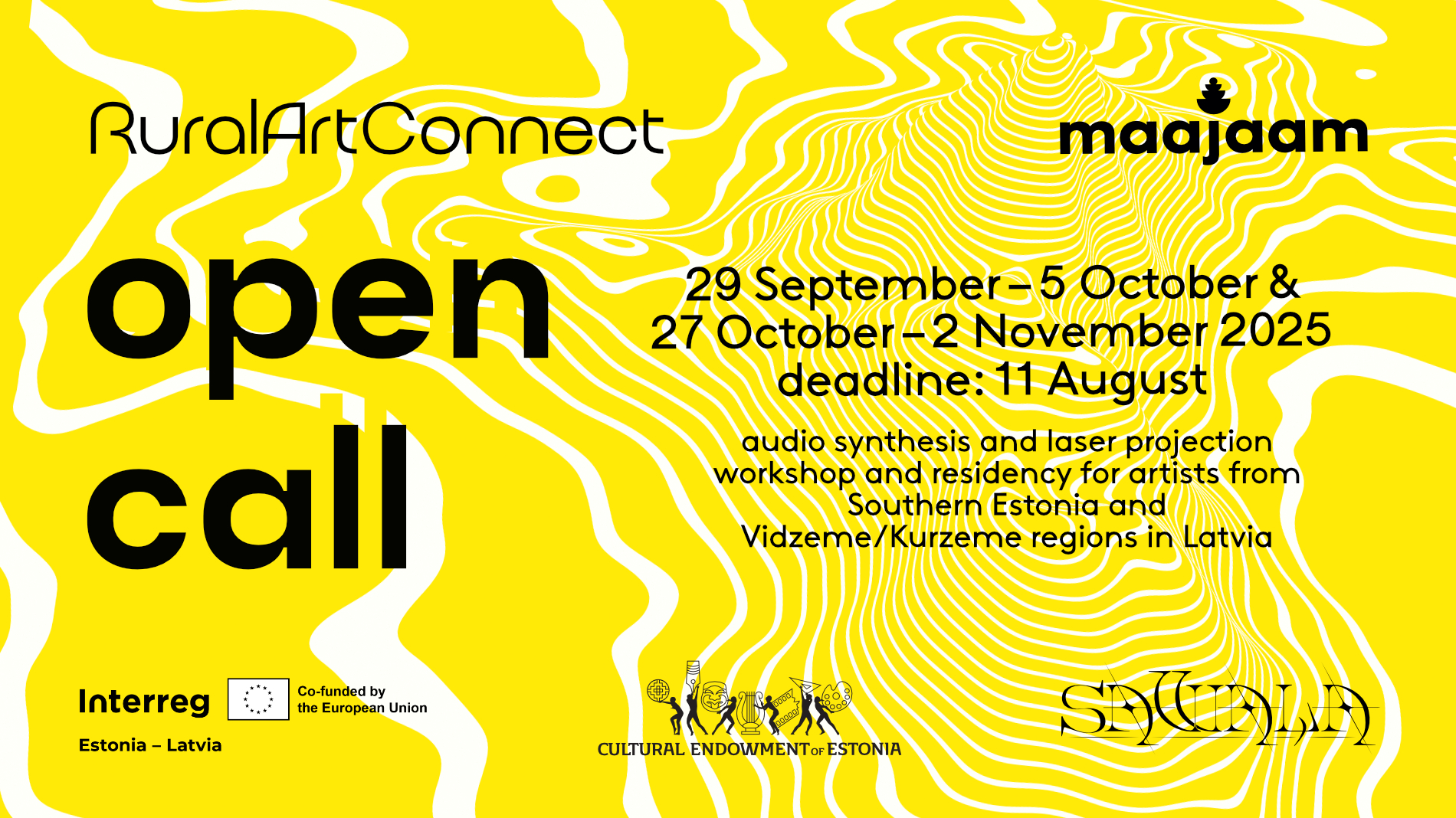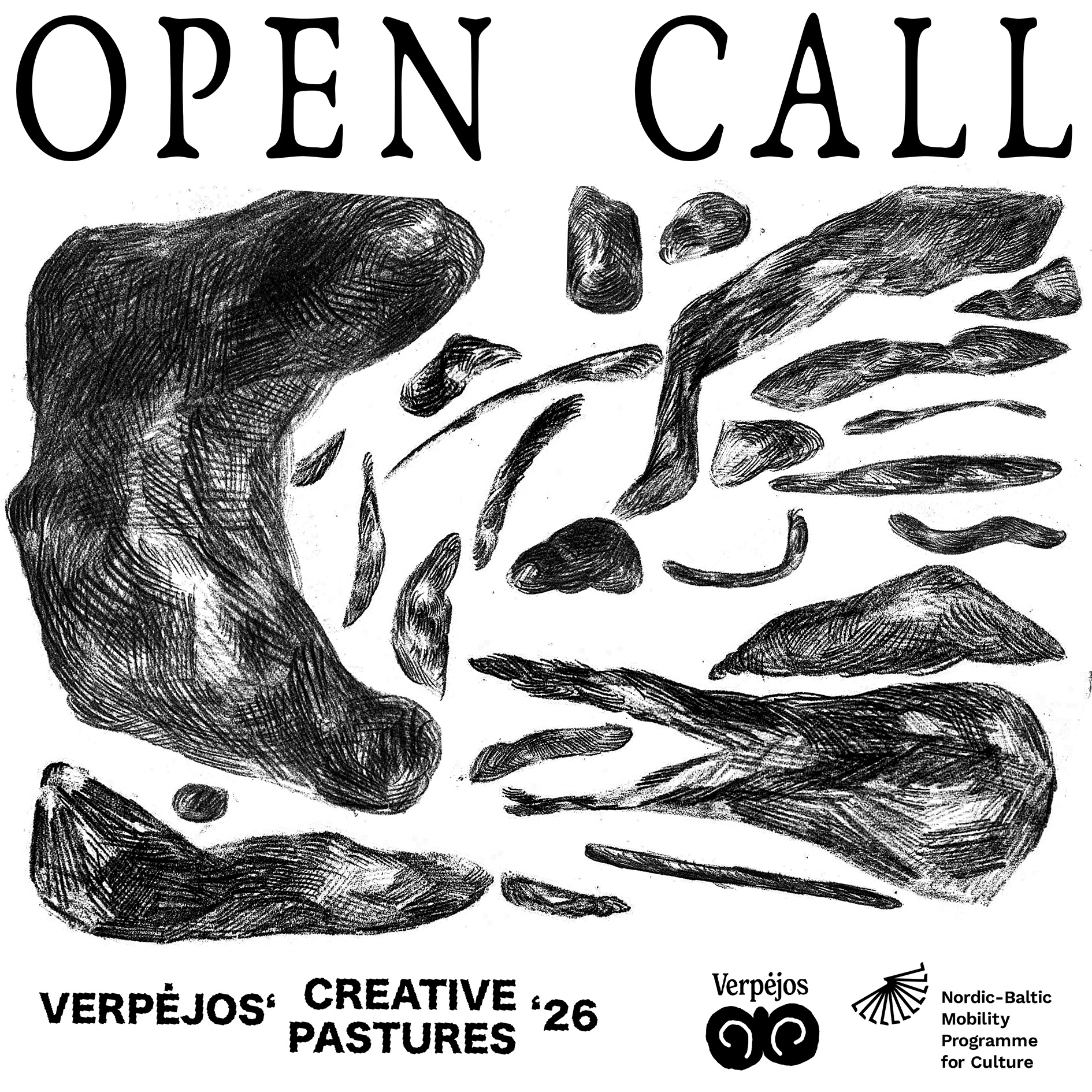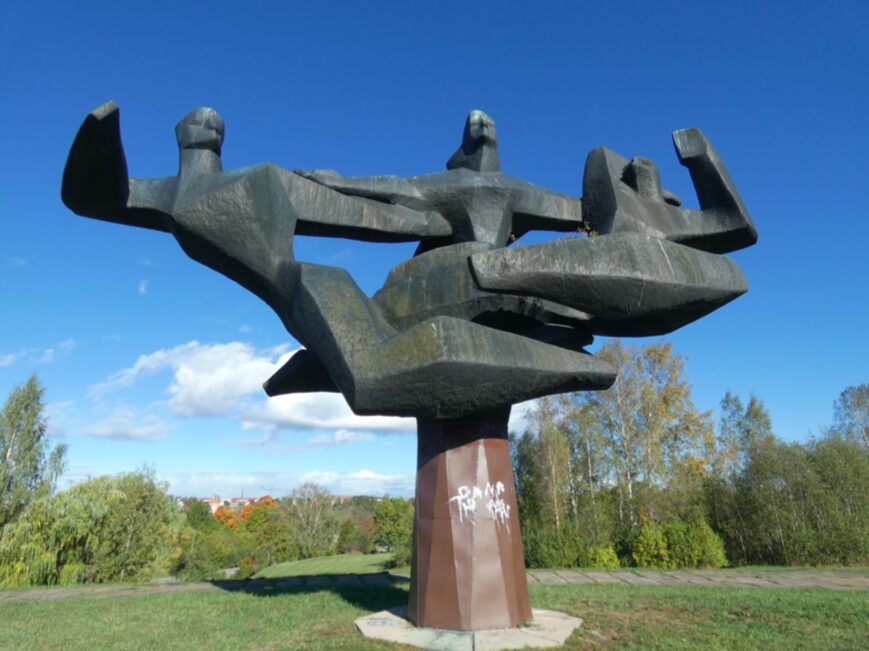‘I am a wanderer drifting through the waters.’ The beginning of Kristina Õllek and Kert Viiart’s video installation ‘As Earliest Carrier Emerges’ might somehow also provide a description for the whole of the ‘Missing’ exhibition. Reams of water, and wandering through them, is a leitmotif of many of the artworks included. The visitors themselves experience the feeling of softly travelling through enchanted and enchanting waters. Fiona Tan, another featured artist (with the video installation Depot), describes her creative process as ‘an aquatic voyage’.[1] Perhaps the depths of the sea populated by mysterious and archaic creatures, and the poetic imagery connected with them, offer the ideal vehicle for artistic reflections on our comprehension of nature, on extinction, on invasion, and on interrelationships among species. The exhibition, held in Tartu Art House and curated by Marie-Laure Delaporte and Sara Bédard-Goulet, has the declared goal to ‘purposefully blur the boundaries between art and science to offer individual takes on environmental decline’ (in the words of the curators). Meandering through the depths of the exhibition’s rooms, my impression was of being led from one question to another, as if from one wave in the sea to another: all the works ask relevant and pressing questions about the environment, its complexities, and the relationships between human beings and other creatures living in it.
Eco-critical perspectives abound nowadays in artistic and literary manifestations: cultural artefacts help us reflect on our physical and material presence in the world, and on how this presence impacts and is impacted by our surroundings. Stacy Alaimo is one of several theorists who has proposed a shift in how we think about human and non-human bodies: the traditional scientific idea placing the human being, and its scientific, analysing and colonising eye, at the centre of the world is challenged by a conception where human corporeality is re-imagined as ‘trans-corporeality, in which the human is always intermeshed with the more-than-human world’. This idea ‘underlines the extent to which the substance of the human is ultimately inseparable from “the environment”.’[2] This perspective, often referred to as a ‘posthuman’ viewpoint, also entails the emergence of alternative conceptions of what ‘matter’ is, and how its agency is articulated, even in ways that are unexpected, surprising and impossible to label through human standards. The ‘Missing’ exhibition explores this posthuman and eco-critical stance through the artworks shown, which highlight the material agency of non-human creatures, and insist on suggesting novel possibilities to see and interpret it: a new openness.
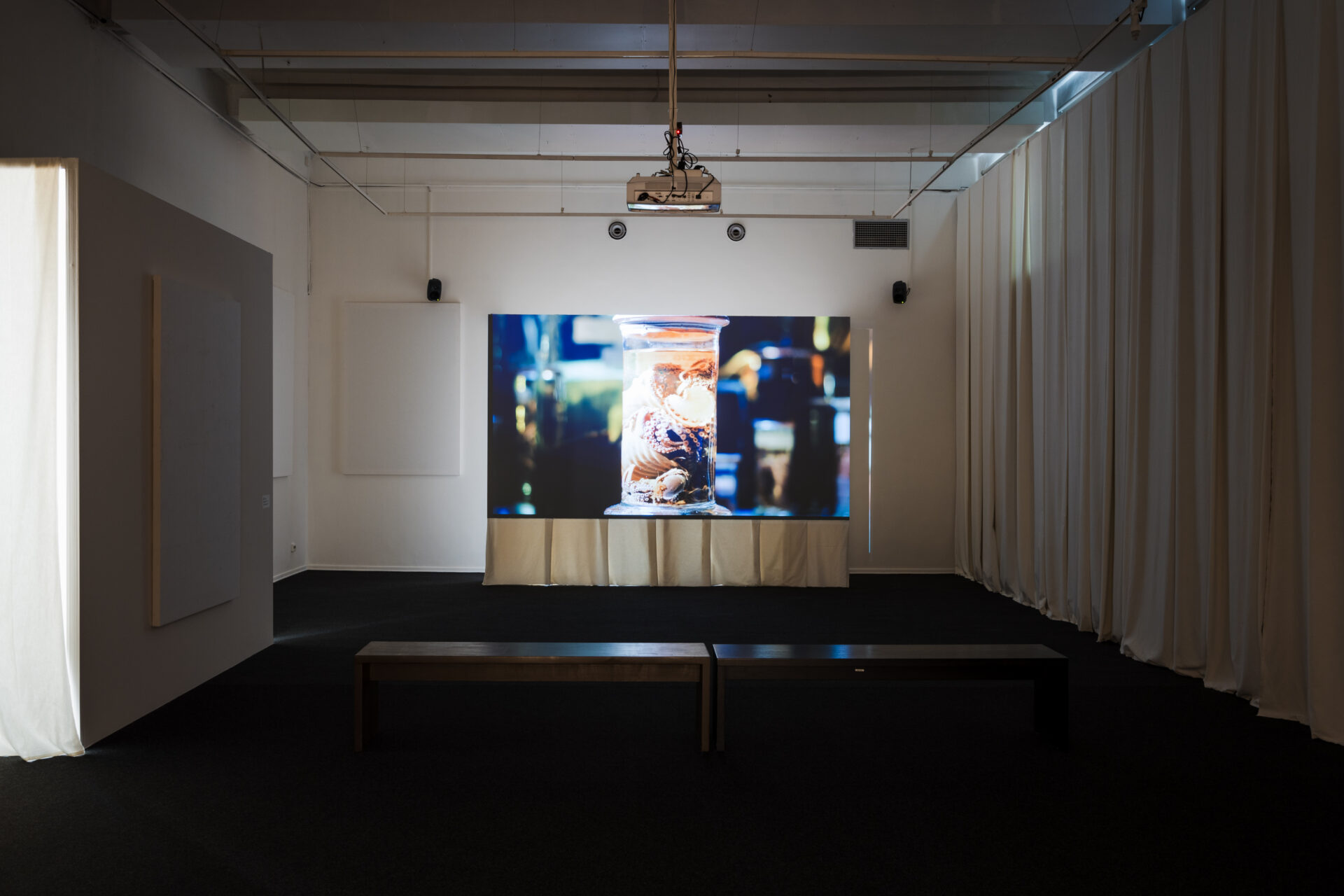
Fiona Tan. Depot. Tartu Art House, 2024. Photo: Jürgen Vainola
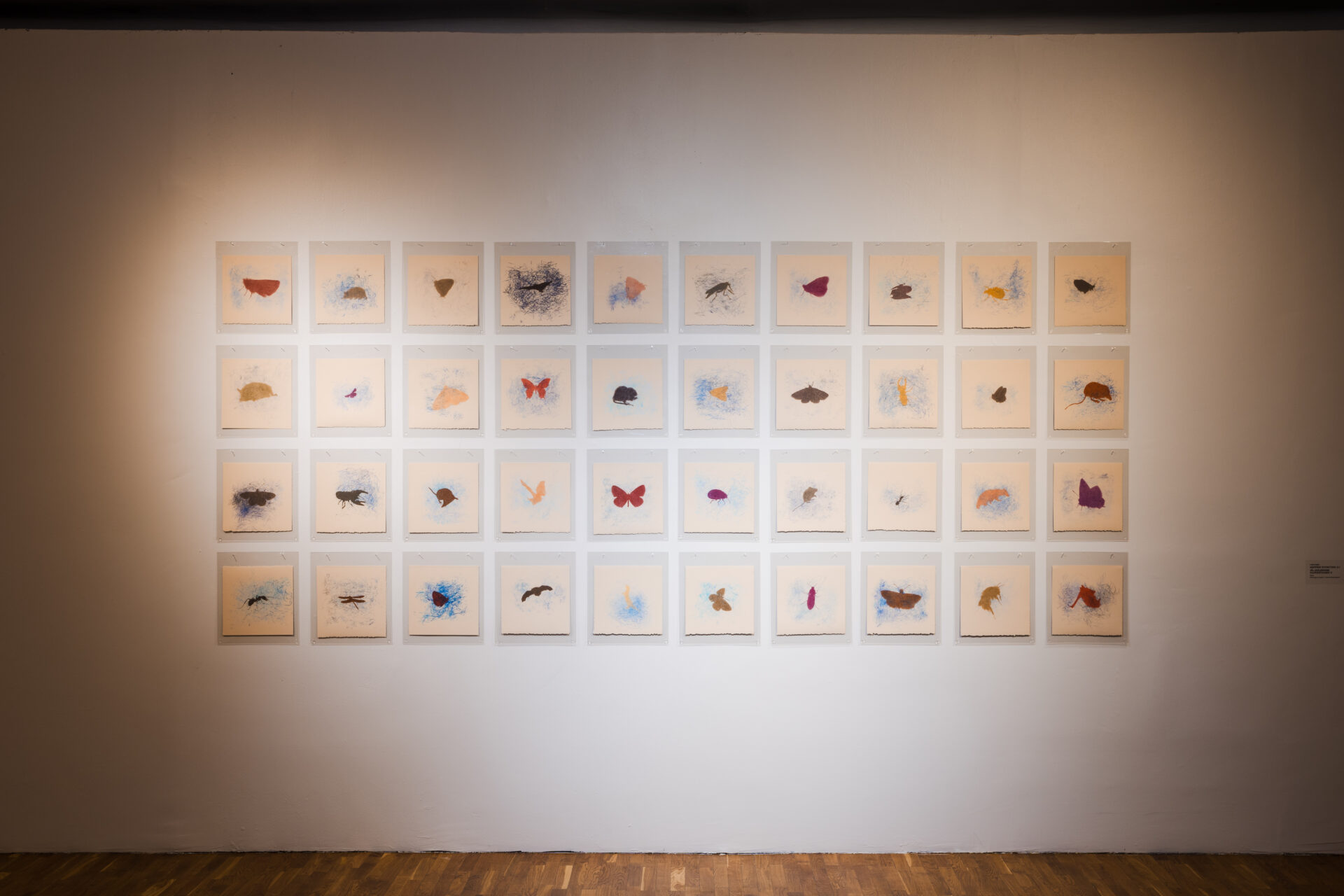
Linda Knight. Mapping Extinction II. Tartu Art House, 2024. Photo: Jürgen Vainola

Tuning Group (Samuel Collins & Mo Langmuir), A Space for Solastalgia: Study & Logbook. Tartu Art House, 2024. Photo: Jürgen Vainola
The works shown in the exhibition pertain to different media: video installations (Kristina Õllek and Kert Viiart, Fiona Tan, Justine Blau, Eliza Gleize), items from the University of Tartu’s Natural History Museum (such as bone fragments, in the work of Flo Kasearu and Elina Vitola), drawings and woodcuts on paper (Linda Knight, Katrin Gattinger), a big textile installation (Louise Gügi), a sound installation (Diana Lelonek), bisque-fired clay depictions of endangered British birds (Jayne Ivimey), and an interesting series of ‘anthotypes’ (Katrin Gattinger). There are also archival digital prints on canvas (Ackroyd and Harvey), a poem (Jaan Kaplinski), and photographs (Alain Delorme). A more ‘intangible’ work of spatial and interactive art is proposed by Samuel Collins and Mo Langmuir. Through this wide variety of media, the artists often intentionally employ scientific methods, such as mapping and collecting, and items from natural history museums; the latter being both physically present in the artworks (in the above-mentioned piece by Flo Kasearu and Elina Vitola) and visually represented in Fiona Tan’s video installation. The artworks ask questions about how we treat and categorise natural specimens, criticising the traditional anthropocentric scientific method, and at the same time proposing new ways to interact with them. As the artist Linda Knight points out with her series of drawings, she has tried to take ‘a speculative, more-than-human ontological position’, using ‘inefficient mapping as an experimental cartographic practice and non-representational methodological protocol for attuning to the subaltern genealogies of sites and places’.[3] Katrin Gattinger’s pieces are created through the anthotype process, which uses the photosensitivity of plants to produce images. More specifically, the images produced by Gattinger with a poppy and a black geranium are meant to represent a Breton octopus. In this sense, they display a potential not entirely human way to depict a natural being, through a natural process where other natural beings are involved.
The exhibition also has the aim to directly involve visitors, making them actively reflect upon their own interactions with the environment: in this sense, Ackroyd and Harvey’s art piece comprises an open invitation to visitors, who are encouraged to overwrite a species of their choice on a canvas where the names of endangered species are already faintly printed. In this way, they bring to attention that particular species, and are thus stimulated to think about it. Samuel Collins and Mo Langmuir’s A Space for Solastalgia, which is to be found both indoors and outdoors, provides visitors with a space to experience this very specifically environment-based feeling. Solastalgia is a word coined by combining the Latin solacium (comfort) and the Greek root –algia (pain), and is used to describe a feeling of melancholia and sadness (an emotion akin to grief) experienced as a consequence of environmental change. The artists thus urge visitors to explore and indulge in this feeling, asking them directly ‘Can you think of an example from your own life?’ and encourage them to share their thoughts in a notebook made available in the room. The pages written by the public are heartfelt and nostalgic descriptions of destroyed forests and natural places from their childhood that have been changed and mutilated because of harmful human interventions. Hence, the scope of the exhibition has a wider reach, not only to display and raise awareness, through a fruitful and creative collaboration of art and science, but also to make the public think about their own personal experiences, actively engaging them.
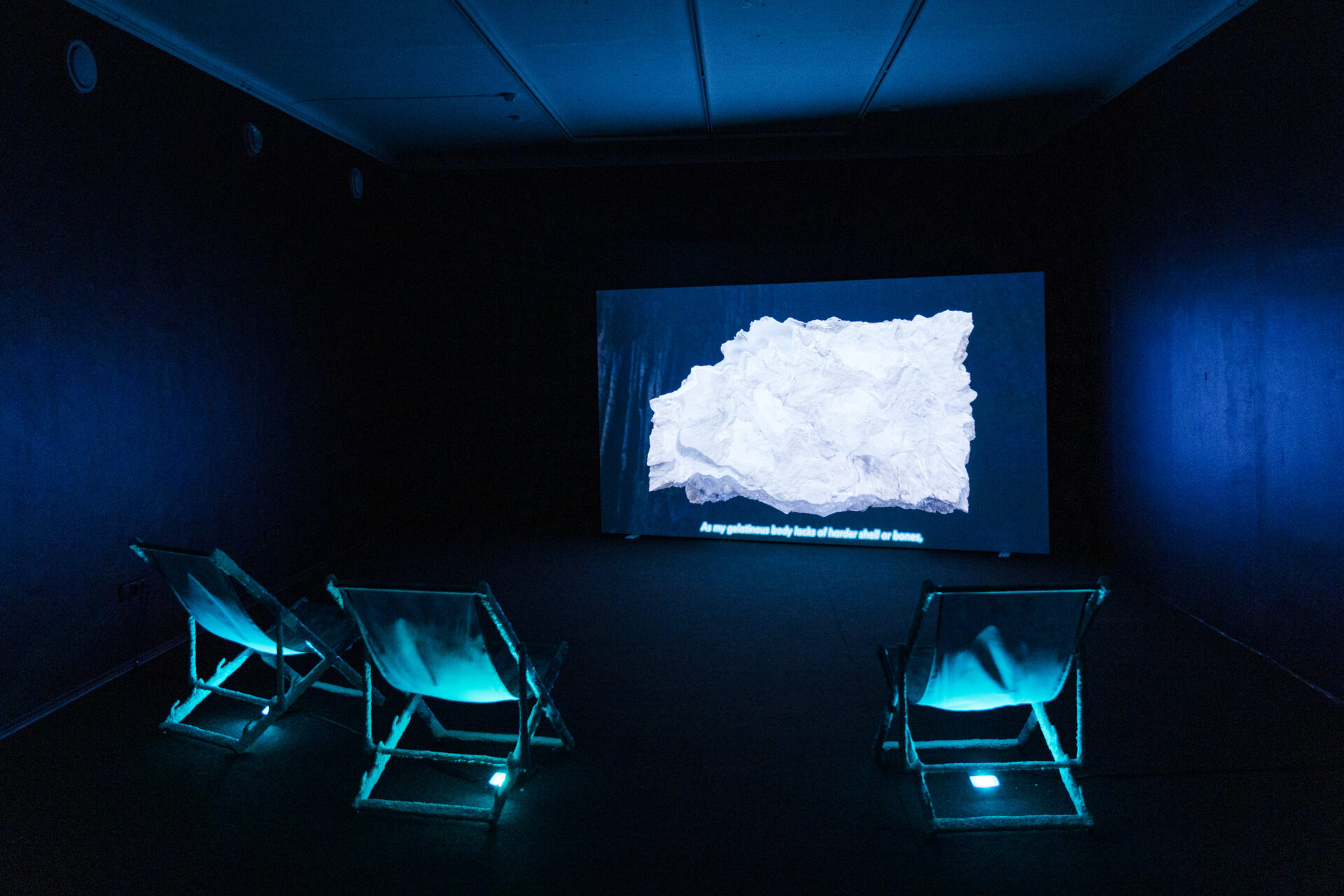
Kristina Õllek & Kert Viiart. As Earliest Carrier Emerges, Tartu Art House, 2024. Photo: Jürgen Vainola
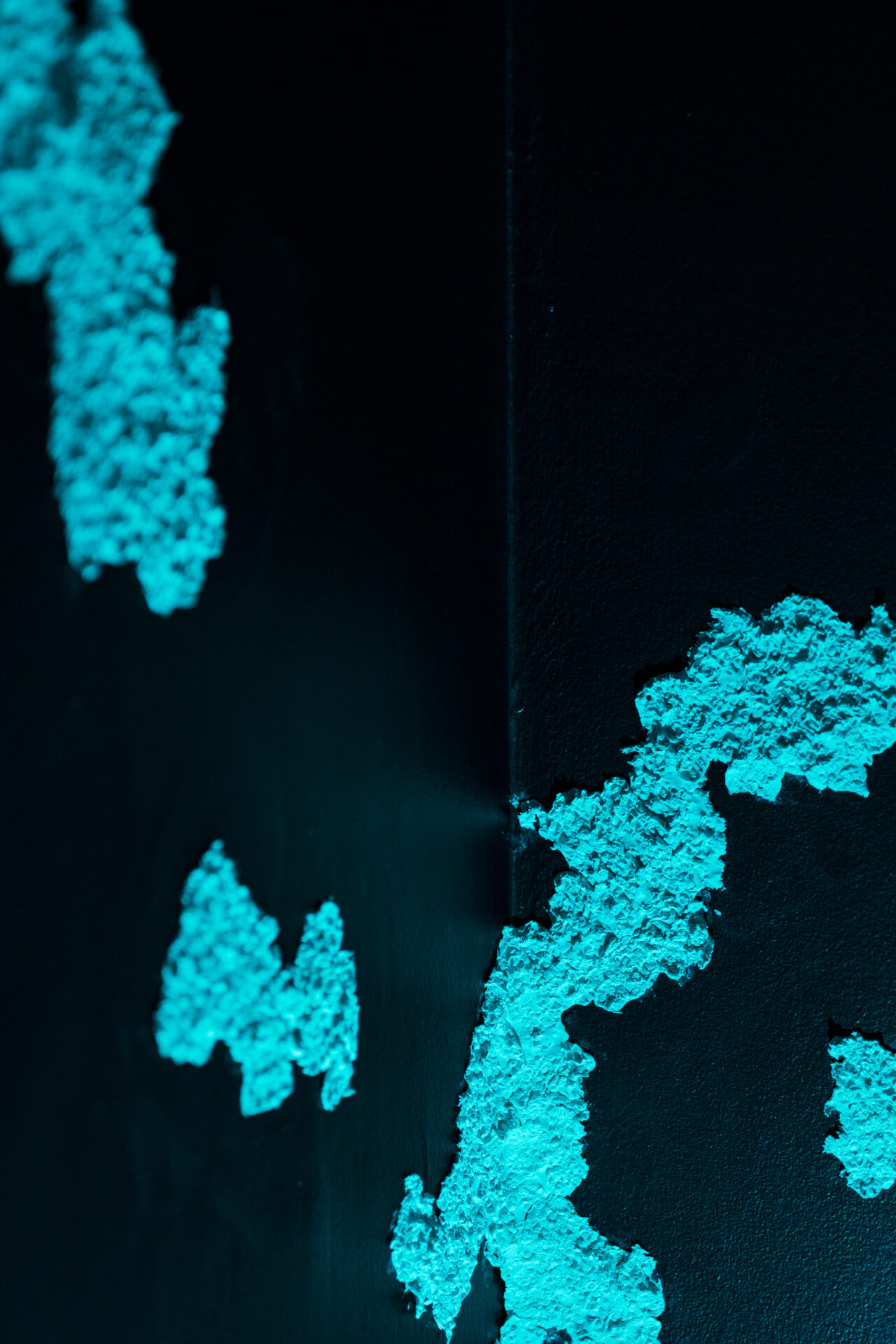
Kristina Õllek & Kert Viiart. As Earliest Carrier Emerges, Tartu Art House, 2024. Photo: Jürgen Vainola
I would like to return to the water theme, which is so widespread in this inspiring exhibition. The protagonist of Õllek and Viiart’s video installation is a jellyfish (the wanderer), and the question insistently asked while the translucent creature moves across oceans is ‘The wanderer wonders: Who invades who?’ In Tan’s video, the narrating voice keeps coming back to sea-related words ‘sea-lily, sea-lion, sea-dragon, sea-urchin’, the voice repeats like a strange lullaby, providing speculations and reflections on the dreams of fish, the memories of octopuses, and the myth of the narwhal’s horn (the narwhal is the sea unicorn) used against melancholy. In the meantime, images of bottled sea-specimens appear in front of the audience’s eyes. in Eliza Gleize’s video, made through the video game Second Life many sea creatures feature, particularly a mermaid singing a haunting song about mistreated bodies. The exhibition’s topic and artworks offer a wider reflection on the environment and extinction in general, but the thematic recurrence of watery beings and watery realms seems to recall what Astrida Neimanis writes about the physical and symbolic function of water in a posthuman perspective. Our own watery nature, Neimanis points out, works as a means to highlight the intermeshing of beings in a discourse about evolution and extinction: ‘Our watery relations within (or more accurately: as) a more-than-human hydrocommons thus present a challenge to anthropocentrism, and the privileging of the human as the sole or primary site of embodiment.’[4] ‘Missing’ is precisely focused on this challenge to anthropocentrism, creating an interactive and persuasive artistic space which inspires the audience to re-think environment-related categories.
[1] Fiona Tan, ‘Depot’, https://fionatan.nl/publication/depot
[2] Stacy Alaimo, Bodily Natures: Science, Environment, and the Material Self (Indiana University Press, 2010), p. 2.
[3] Linda Knights, ‘Mapping Extinctions’, https://lindaknight.org/mapping-extinctions/
[4] Astrida Neimanis, Bodies of Water: Posthuman Feminist Phenomenology (Bloomsbury 2017), p. 2.
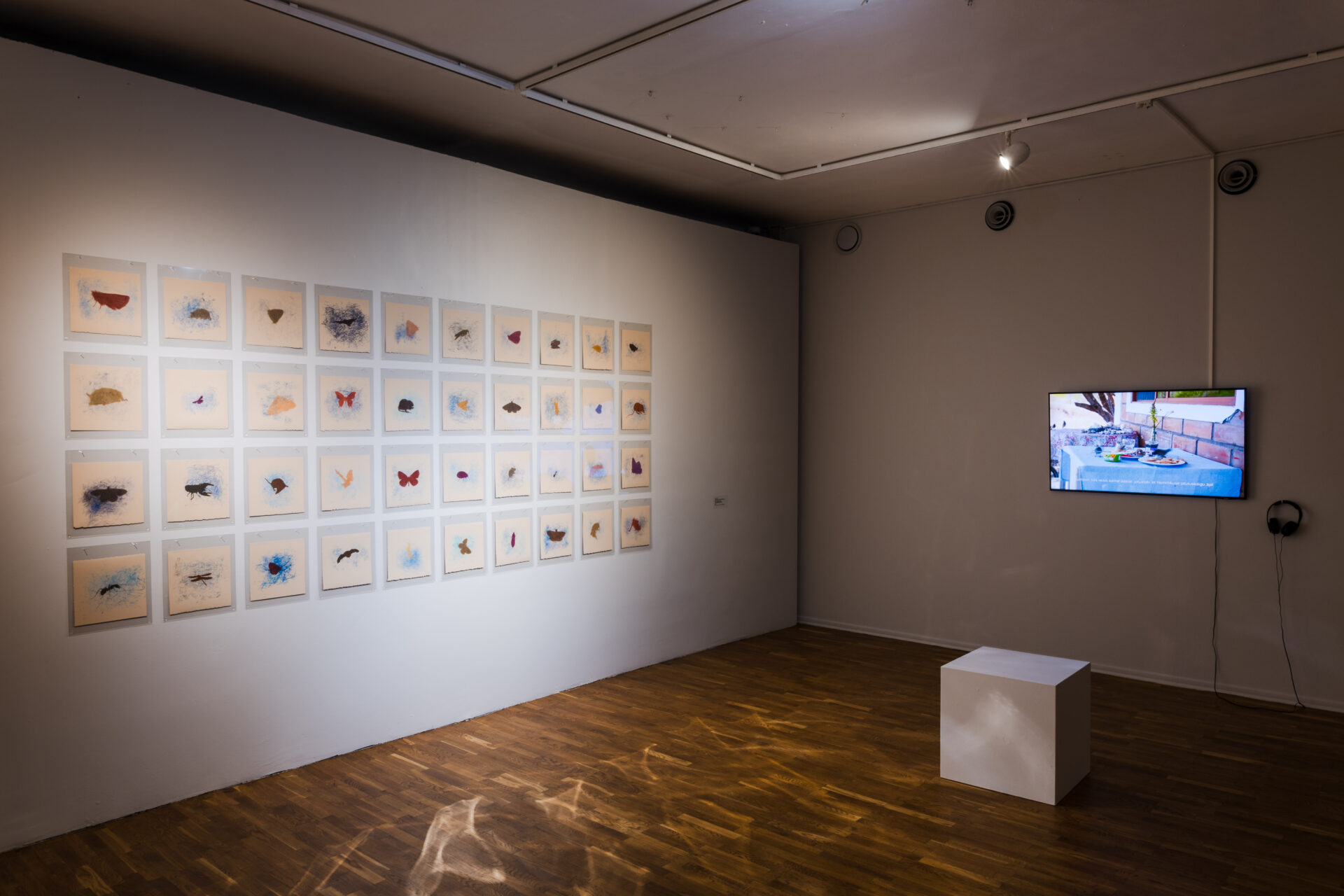
Left: Linda Knight. Mapping Extinction II. Right: Justine Blau. Darwin’s Finches, Tartu Art House, 2024. Photo: Jürgen Vainola
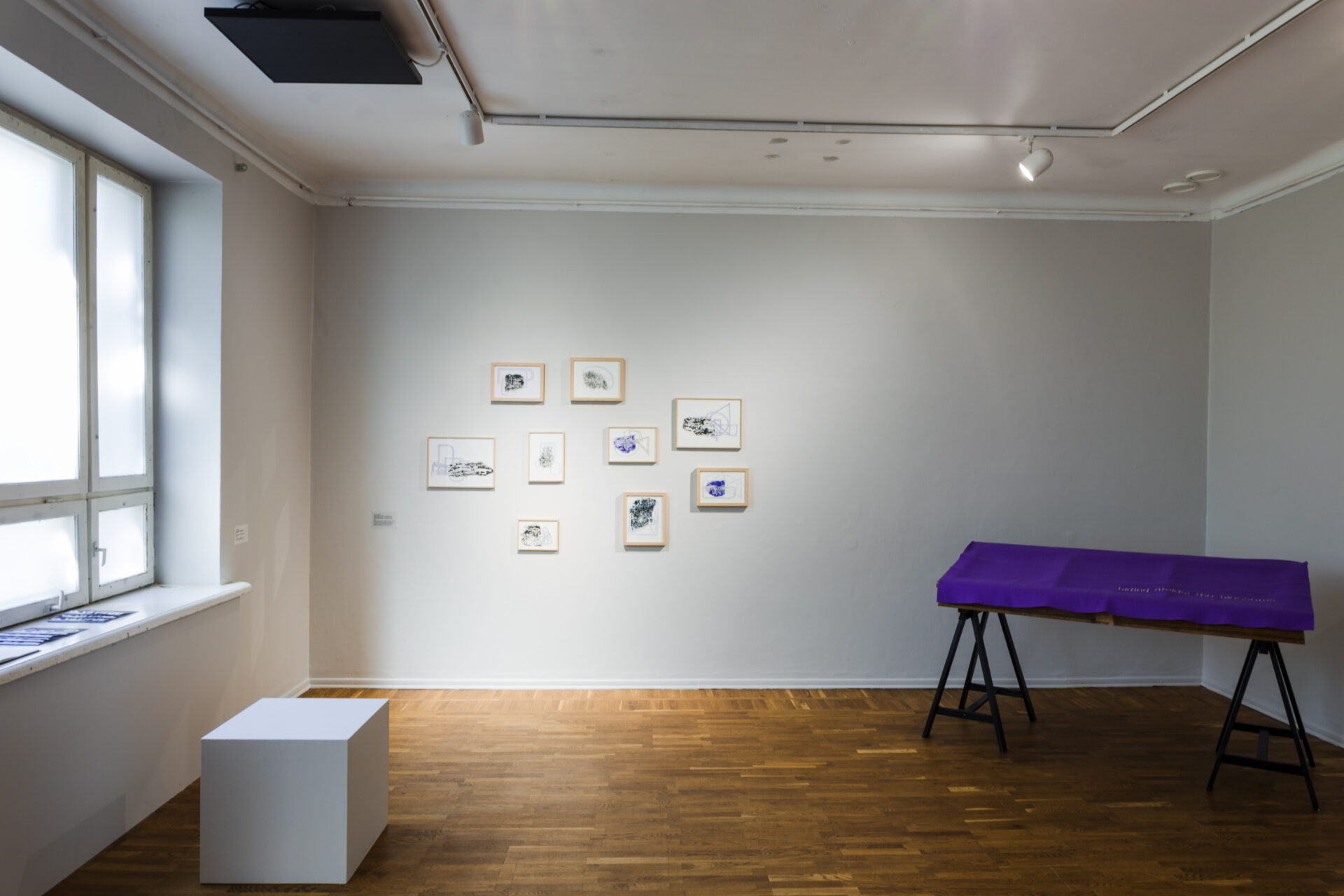
Left: Katrin Gattinger. Drawing with Animals. Right: Katrin Gattinger. Hiding Amidst the Blossoms (Octopus Vulgaris). Front: Diana Lelonek. Endling, Tartu Art House, 2024. Photo: Jürgen Vainola
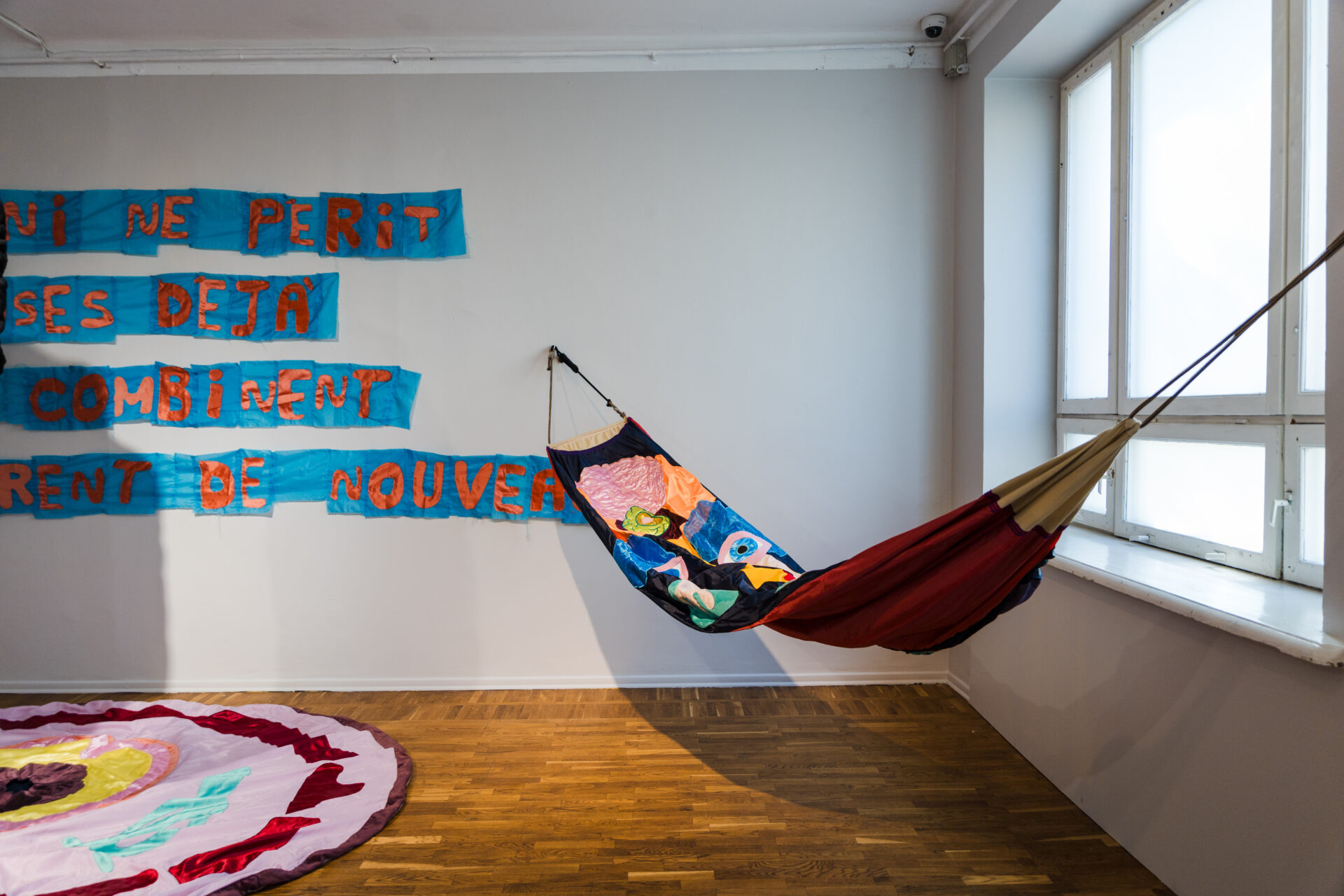
Louise Gügi. Larves! Tartu Art House, 2024. Photo: Jürgen Vainola
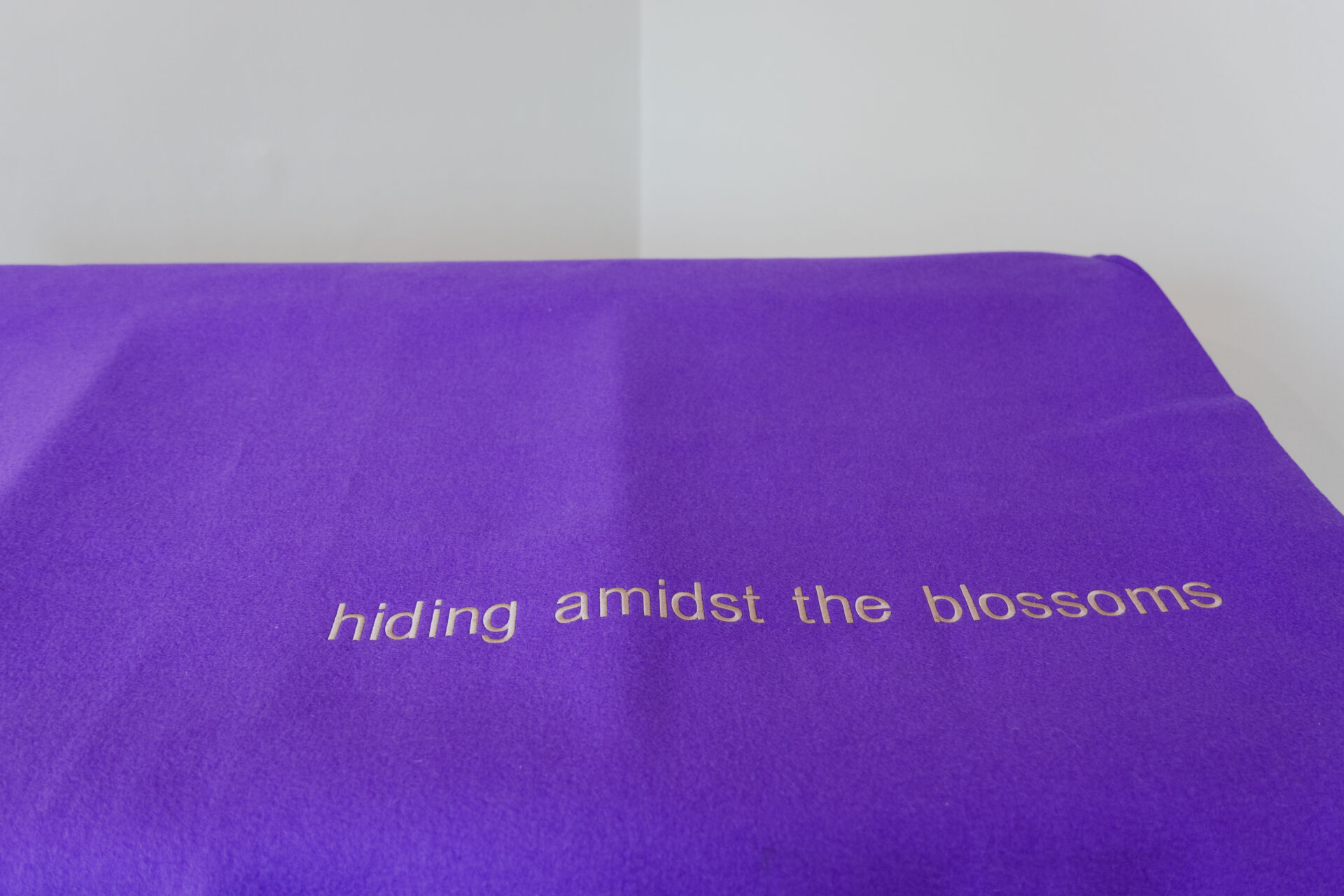
Katrin Gattinger. Hiding Amidst the Blossoms (Octopus Vulgaris), Tartu Art House, 2024. Photo: Jürgen Vainola
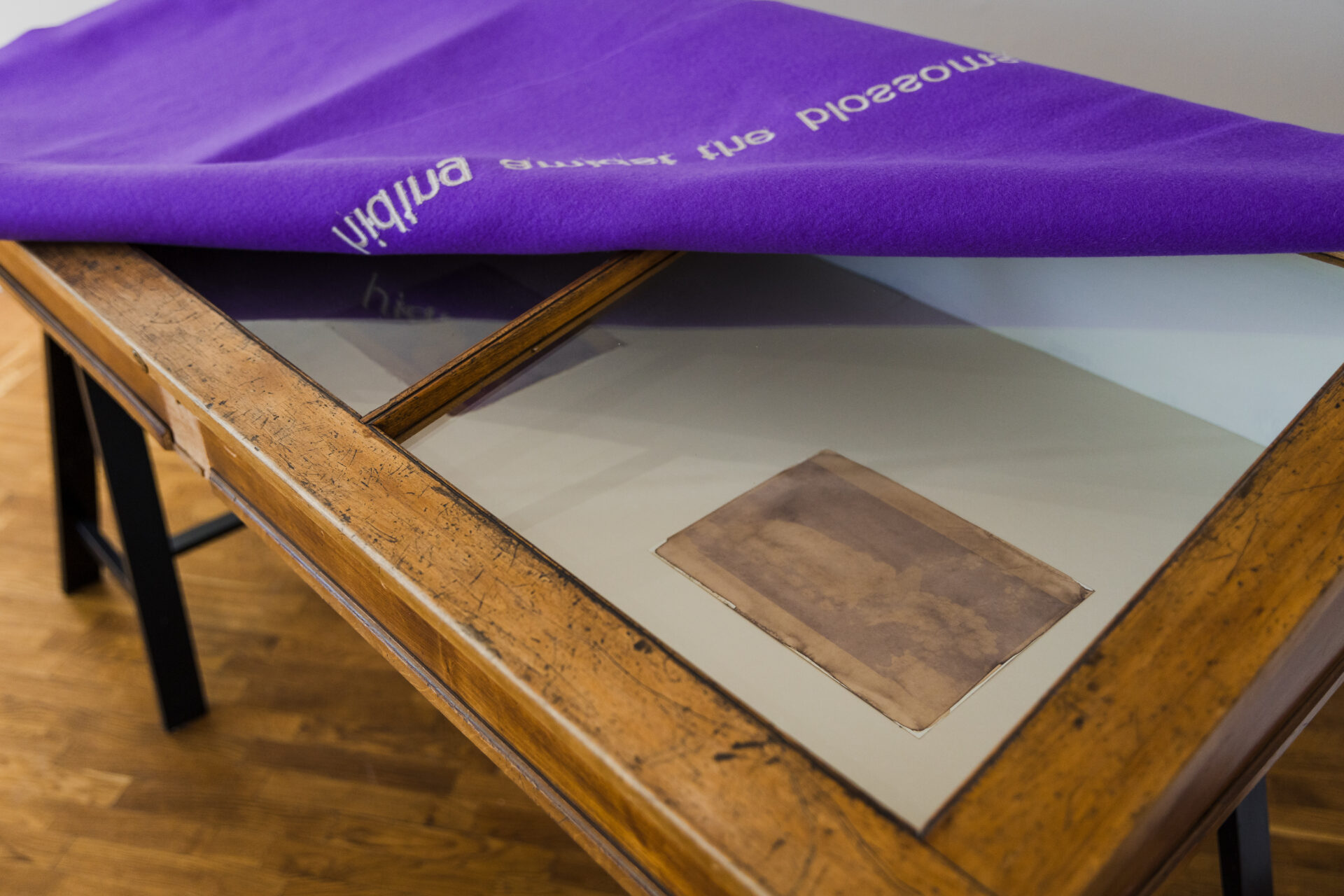
Katrin Gattinger. Hiding Amidst the Blossoms (Octopus Vulgaris), Tartu Art House, 2024. Photo: Jürgen Vainola
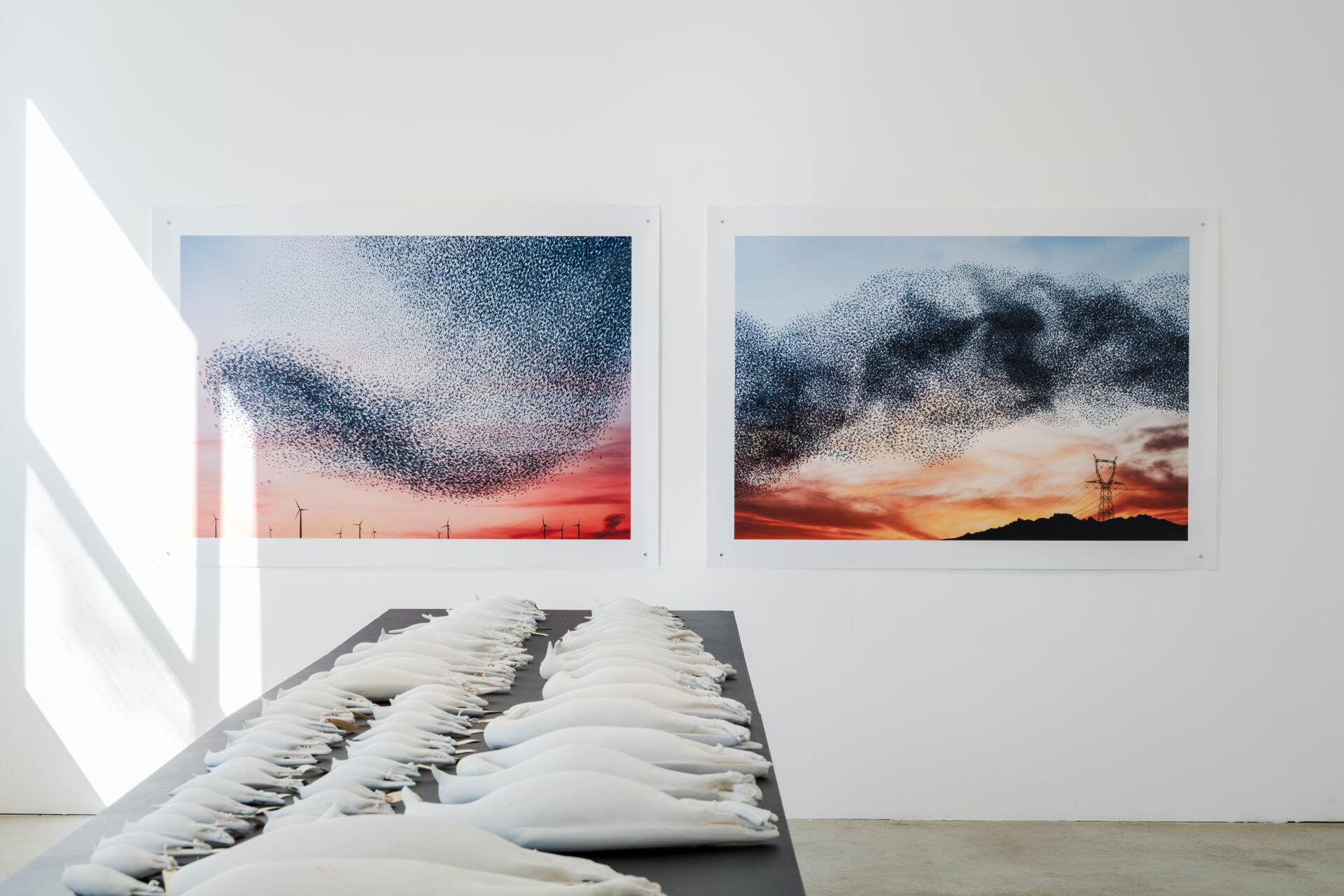
Front: Jayne Ivimey. Bird by Bird (The Red List of Endangered British Birds). Back: Alain Delorme. Murmurations, Tartu Art House, 2024. Photo: Jürgen Vainola
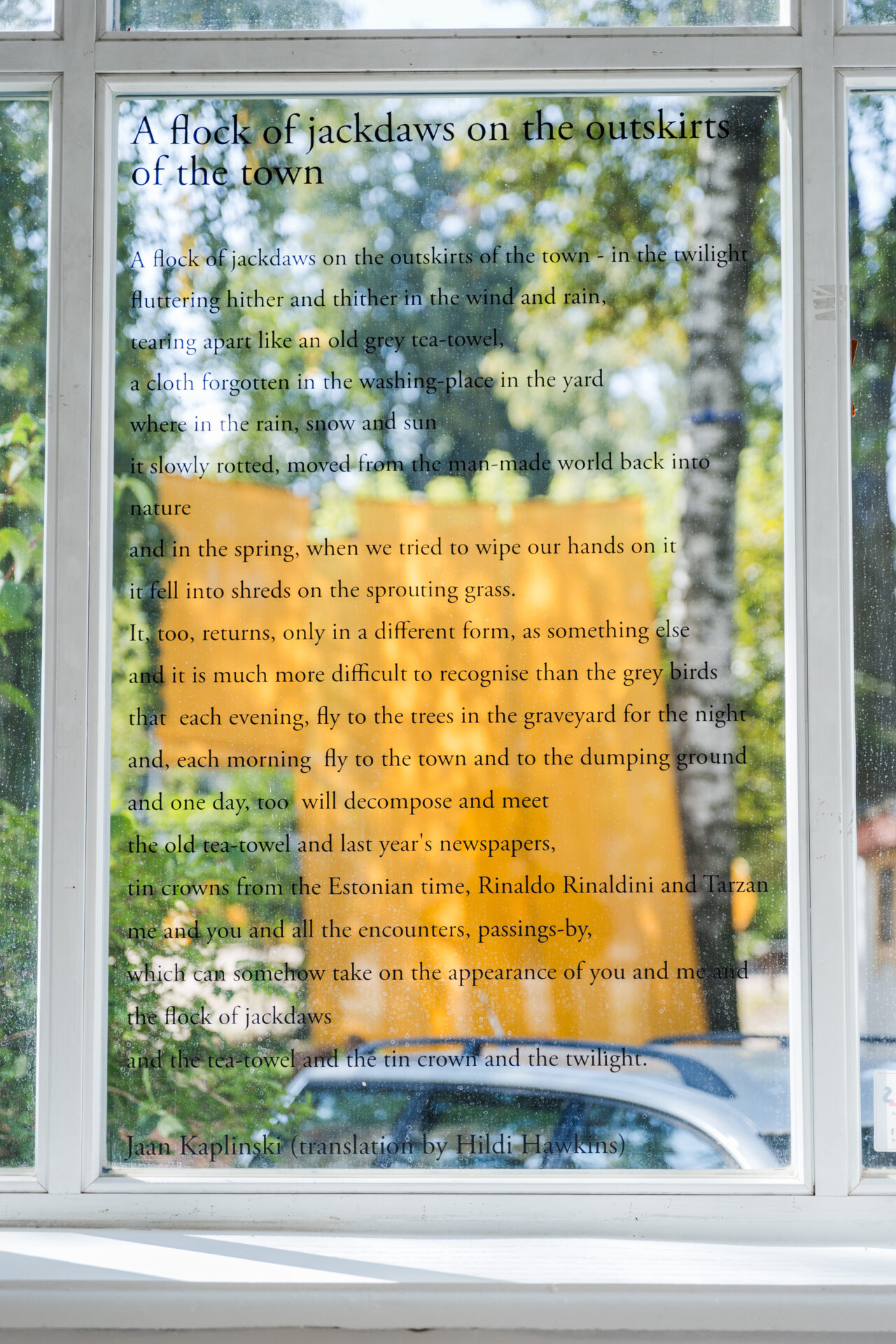
Jaan Kaplinski, A Flock of Jackdaws on the Outskirts of the Town, Tartu Art House, 2024. Photo: Jügen Vainola
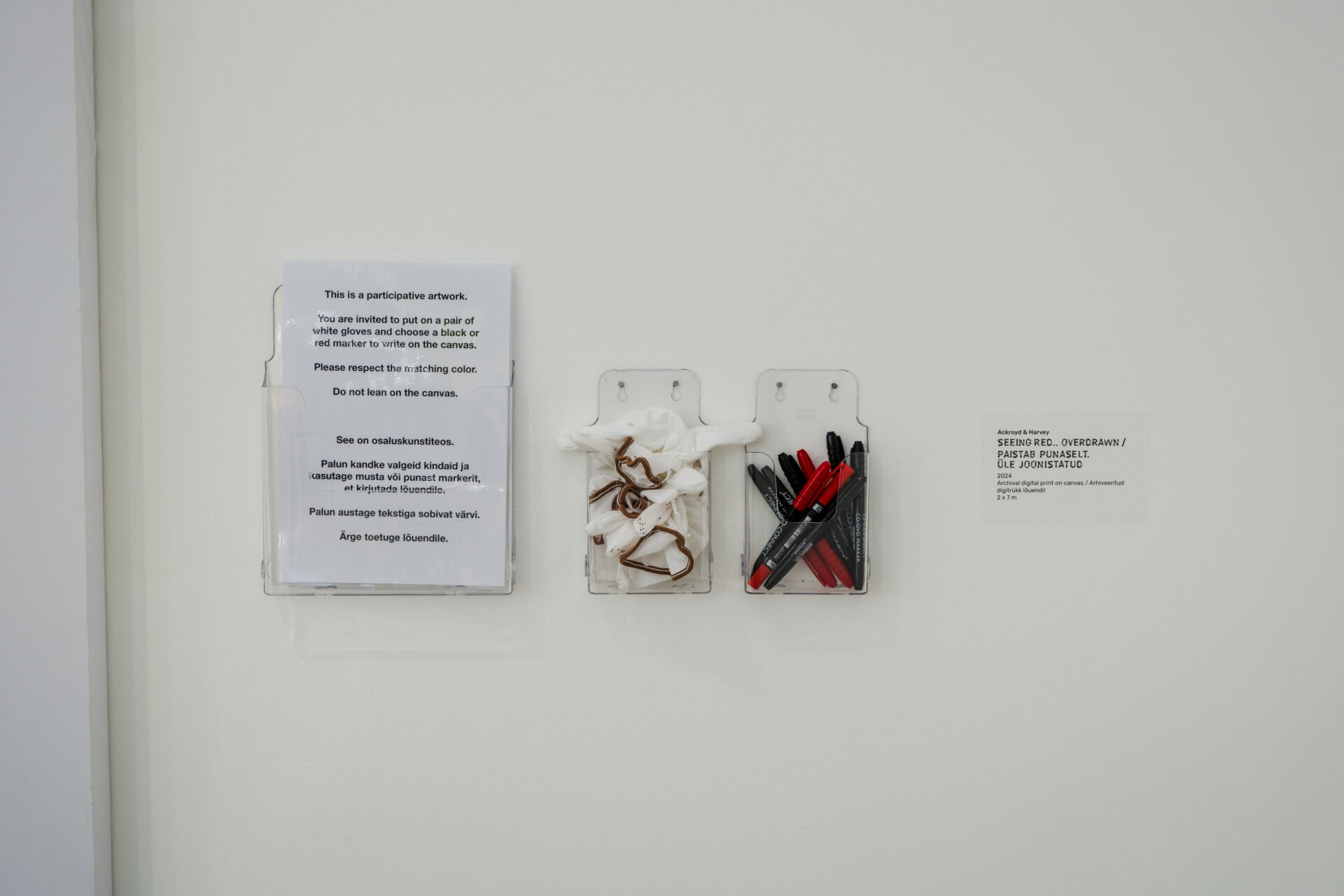
Ackroyd & Harvey. Seeing Red.. Overdrawn, Tartu Art House, 2024. Photo: Jürgen Vainola
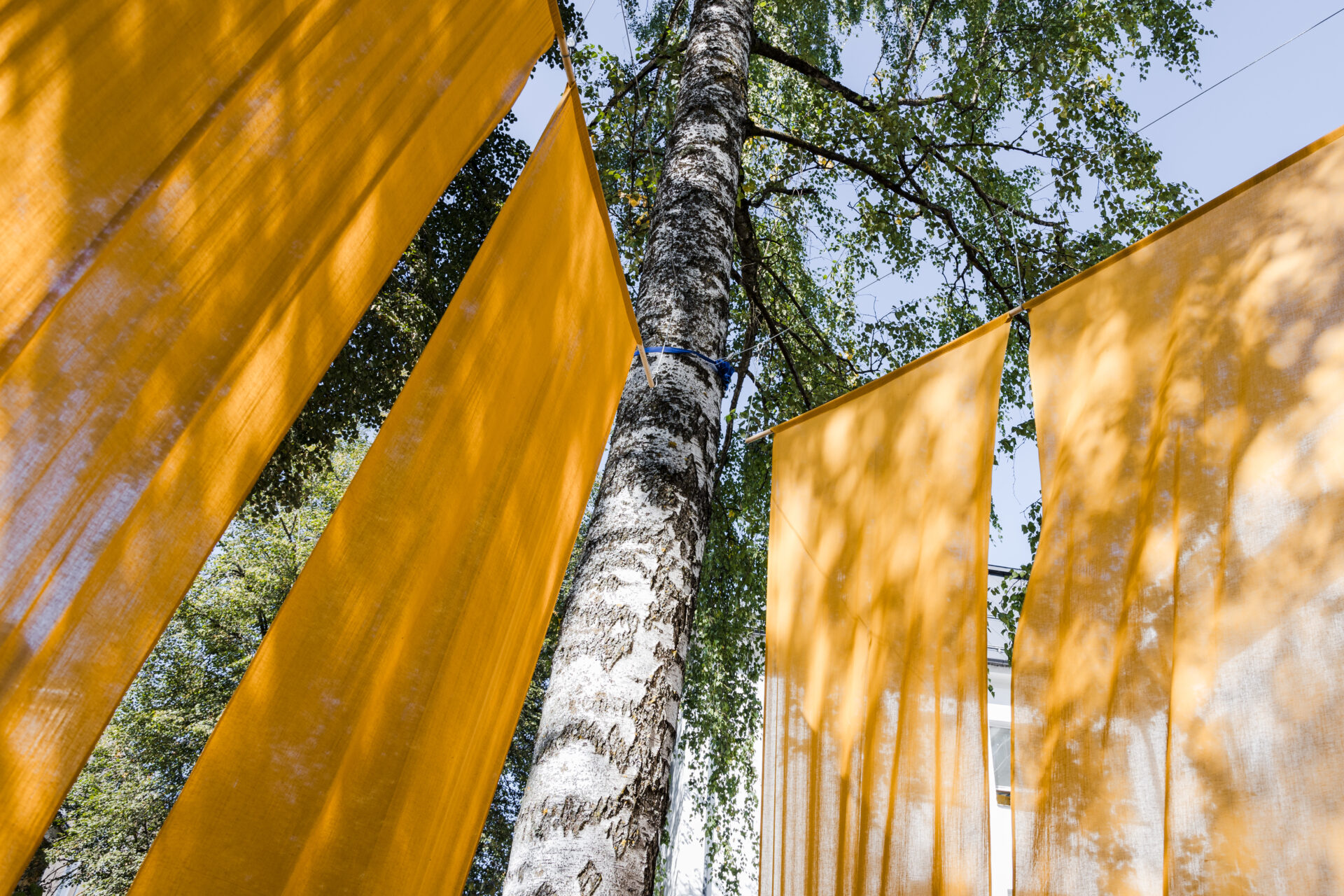
Tuning Group (Samuel Collins & Mo Langmuir), A Space for Solastalgia: Garden, Tartu Art House, 2024. Photo: Jürgen Vainola
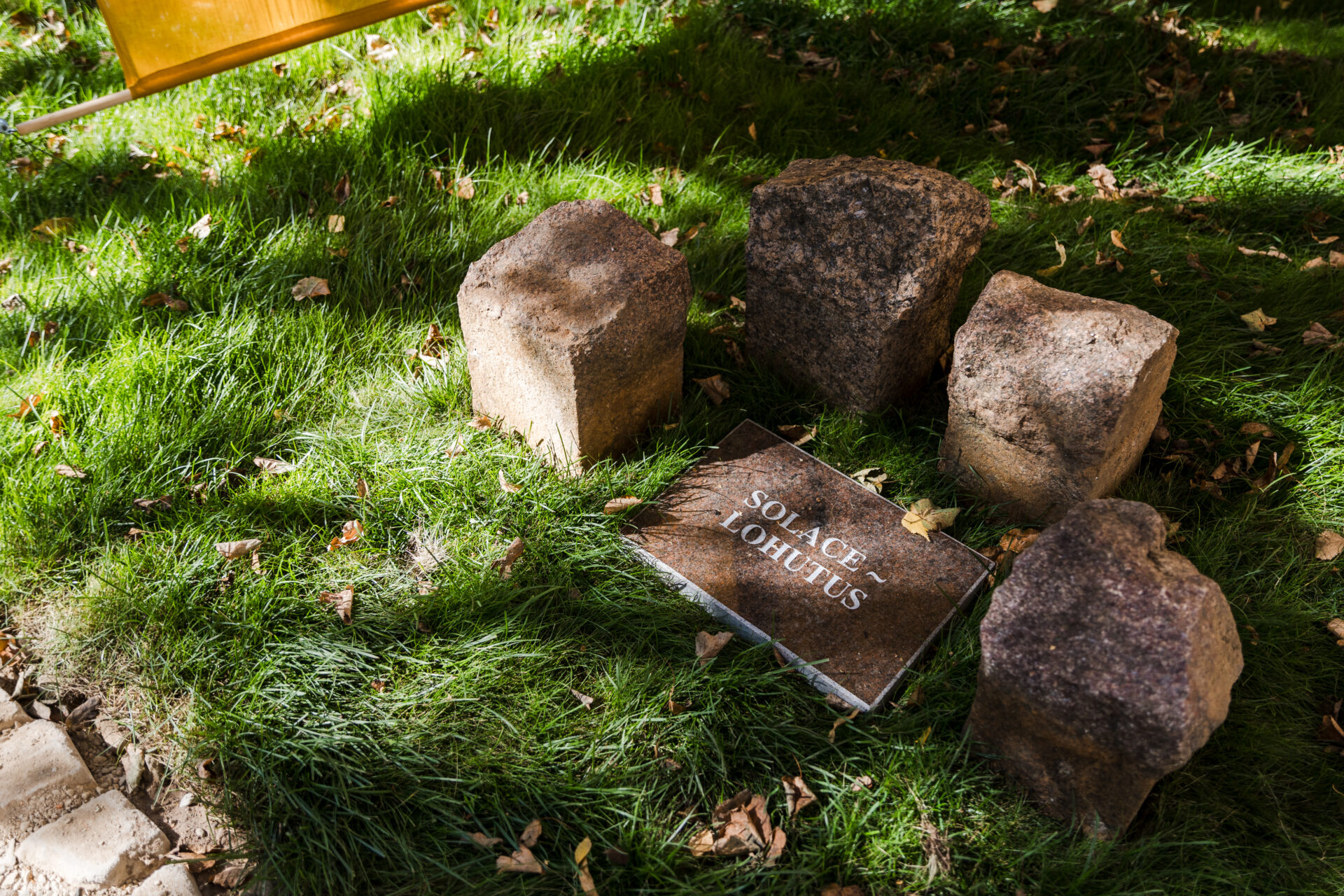
Tuning Group (Samuel Collins & Mo Langmuir), A Space for Solastalgia: Garden, Tartu Art House, 2024. Photo: Jürgen Vainola
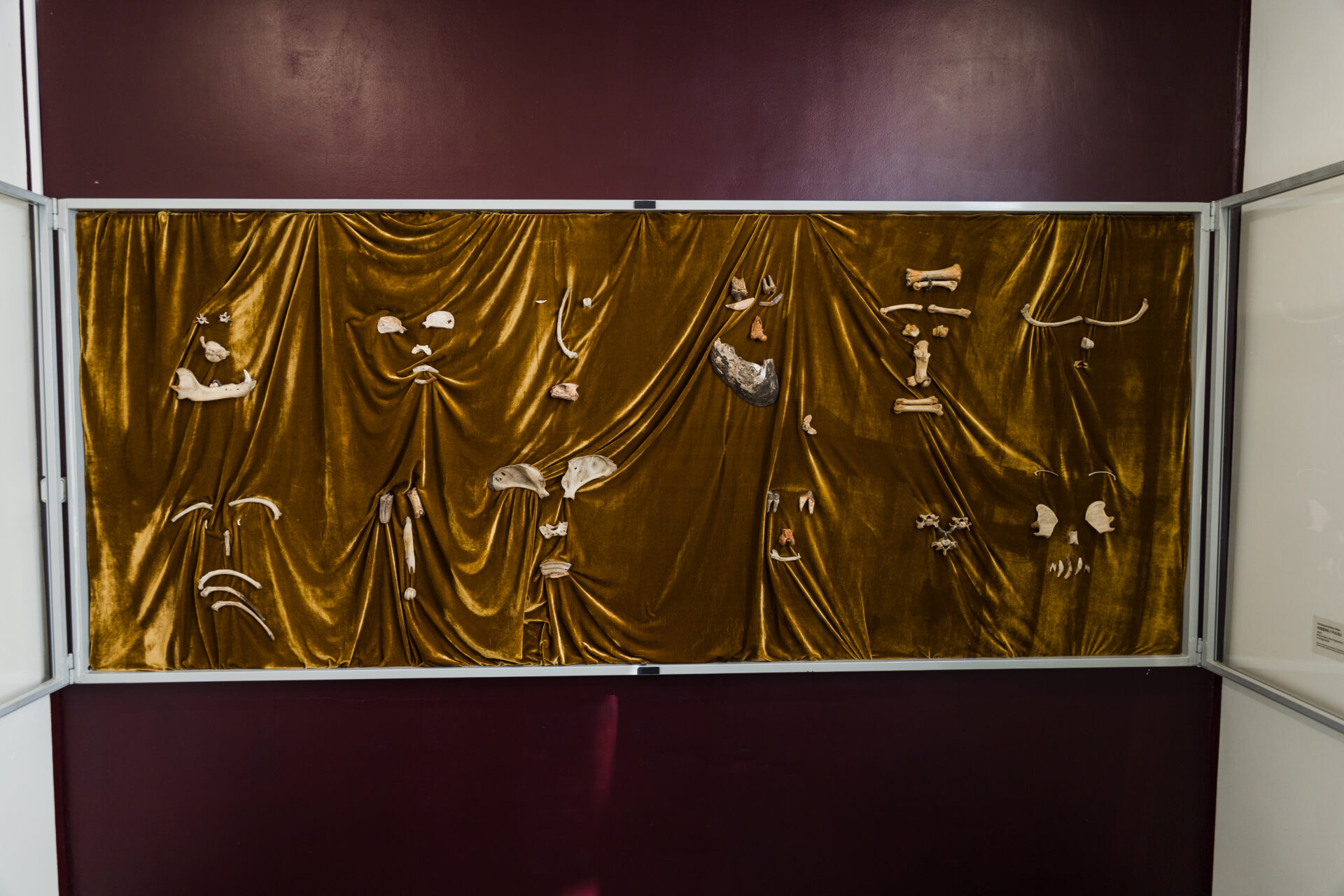
Flo Kasearu & Elīna Vītola. Missing, Tartu Art House, 2024. Photo: Jürgen Vainola
